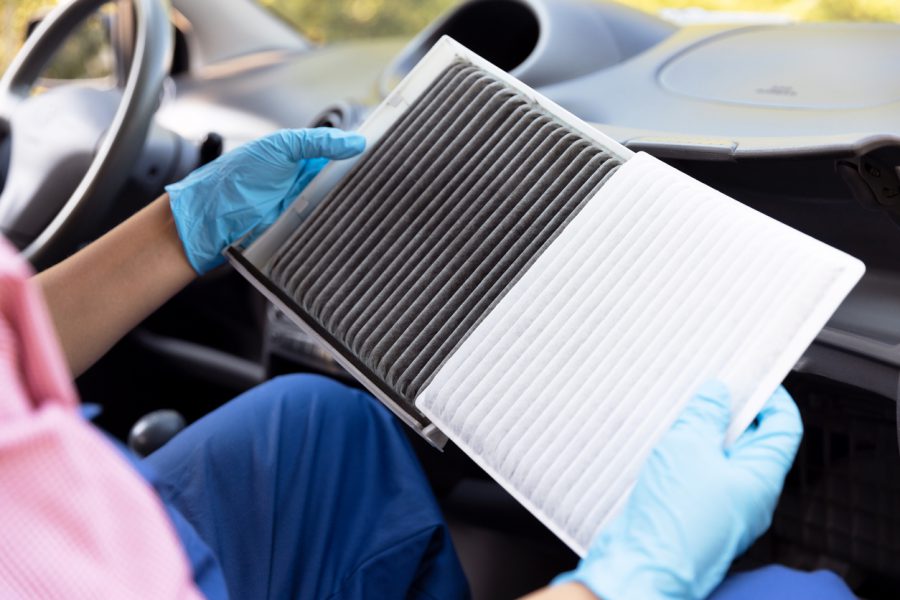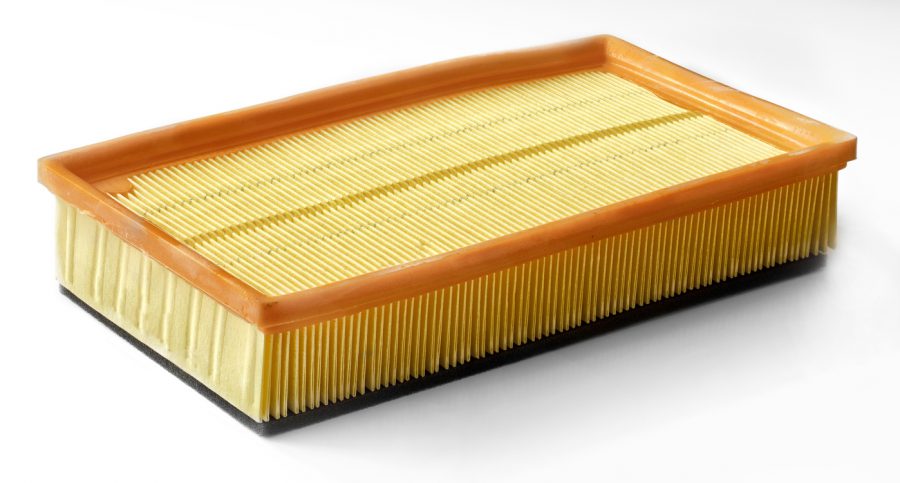
If you get a funny smell whenever you turn the ventilation on in your car, you might need to replace the cabin filter. Here I’m going to look at what the cabin filter is and how it might be easier than you think to replace yourself.
What is a cabin filter?
All the air that comes into the car’s cockpit through the air vents first passes through a filter. This is known as the cabin or sometimes pollen filter. If you didn’t have this filter, the air coming in through the vents would be bombarding you with dust, bits of grit and pollen.
It’s worth remembering that in a modern car the cabin filter is different to the engine’s air filter.
What is a pollen filter made of?
This depends on your car. Some more basic cabin filters are pleated paper in a plastic framework. Others are fabric and some filters contain carbon in the form of charcoal and other materials.
These more sophisticated filters will absorb smells and other pollutants from the air that passes through them. Some have an anti-allergenic microbial function to prevent mould spores and other allergens getting into the cockpit.

How to change your filter
On some cars, changing the pollen filter is a very easy job. It doesn’t really involve any mechanical skill. All you’re doing is swapping an existing dirty part for a replacement clean one. Your car’s user manual should tell you how easy or otherwise changing the filter is.
Frequently you don’t need any tools to replace a cabin filter. All you do is undo a couple of clips, slide out the old one and slide its successor in. It’s important to make sure you put the new filter in the correct way round. It will probably have arrows on showing the right way round.
If you do put it in the wrong way round, it’s not disastrous. But you will seriously reduce the new filter’s life span.
Where is the cabin filter?
This depends on your car. In some models it will be behind the glovebox. In other cars it will be in the engine bay, accessed by the base of the windscreen. If your car falls into this category, don’t consider fiddling with it until at least 30 minutes after driving to avoid hot engine parts burning you.
Buy the right part
Your car’s user manual should tell you what the correct part is. Cabin filters aren’t expensive. Most will cost between £10 and £20. And there’s no point in scrimping here: at best you’ll only save a couple of quid. At worst you might buy a ‘pattern part‘ that might not fit properly and you’ll have to buy the more expensive bit anyway.
If your cabin filter sits beneath the windscreen, you must replace the cover properly. If you don’t re-seal this properly, water can get into it, the filter will go mouldy and you really will notice a bad smell in the cockpit!
Why think about your cabin filter now?
As we tend to use our car’s heating more over the winter months, pollen filters have more work to do. And if dust and other bits of rubbish are clogging your fan, it will have to work harder to draw air through the filter. The fan might even stop working if dirt and leaves are really clogging it.
How often do filters need changing?
The pollen filter isn’t a safety critical component. You might never replace it and it wouldn’t have any impact on how safe or reliable your car is. However, the air quality inside your car definitely wouldn’t be what it should be.
Most car manufacturers will recommend you change the filter every year or two, or between about every 12,000 and 20,000 miles. But garages don’t always change it so it might be worth looking at any paperwork you have for your car to see when it was last replaced.
By John Price, a member of Green Flag’s automotive technical support team